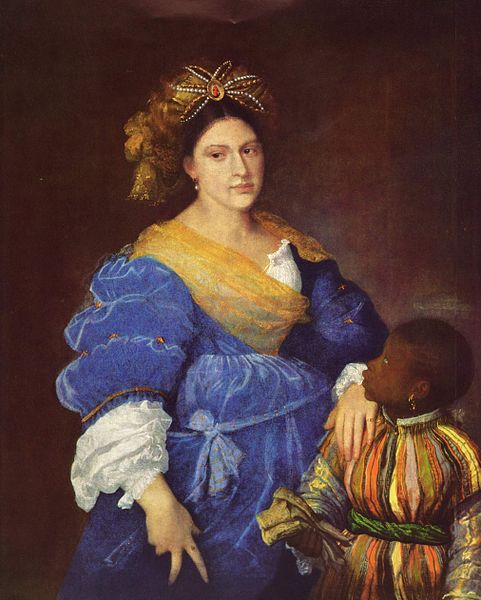Tiziano’s portrait of Laura Dianti was painted between 1523 and 1528, when the painter was working on the decoration of Alfonso I’s studiolo in Ferrara, and probably served as a pendant to the Duke’s portrait, which today remains in a copy kept at the Metropolitan Museum in New York. The couple’s portrait demonstrates, if proof were still needed, the stable and publicly enjoyed relationship between Laura and Alfonso. Much has been said about the legitimacy or otherwise of their union, no official document has ever been found, suggesting that the evidence was destroyed. If Laura Dianti had had the title of Duchess or not became crucial when Alfonso II had no legitimate heir to leave the Duchy to: the lack of a direct line of descent sanctioned the Devolution of Ferrara to the Papal States (1598). The couple had two sons, Alfonsino and Alfonso, the latter of whom would be the father of the Cesare called to become Duke and transfer the Este court to Modena. It was precisely in that fateful 1598 that Cesare had his grandmother’s portrait delivered to Rudolph II of Habsburg as a ‘political gift’ to favour an intervention by the Emperor.
Laura is portrayed as a noblewoman, her humble origins are only a memory: her hairstyle, her jewellery, her gold and blue gowns that immediately recall the colours of the household, and the black page following her are details that define her as aristocratic. The woman is portrayed in three-quarter view, her gaze is turned away from the painting as if something has caught her eye, one hand holds her ample skirt while the other rests on the shoulder of a young page who, at the touch of her hand, turns towards her. Laura’s pale face emerges from the dark background of the canvas, on her head she wears a Turkish turban embellished with jewels and gems, while on her elegant blue dress a very light golden veil is laid.
Many copies of this painting are known, perhaps because it passed through numerous European collections: following the sack of Prague (1648), the work returned to Italy to the collection of Christina of Sweden in Rome and, after other changes of ownership, in the 18th century the canvas came to Paris. In the following century the painting passed to England and only since 1956 has the work found a permanent home in a private collection in Switzerland.
Tiziano’s art shows us how the daughter of a simple Ferrara beret-maker could be legitimised to nobility through her image and, some 500 years later, still be admired for her elegance and beauty, passing into history.







